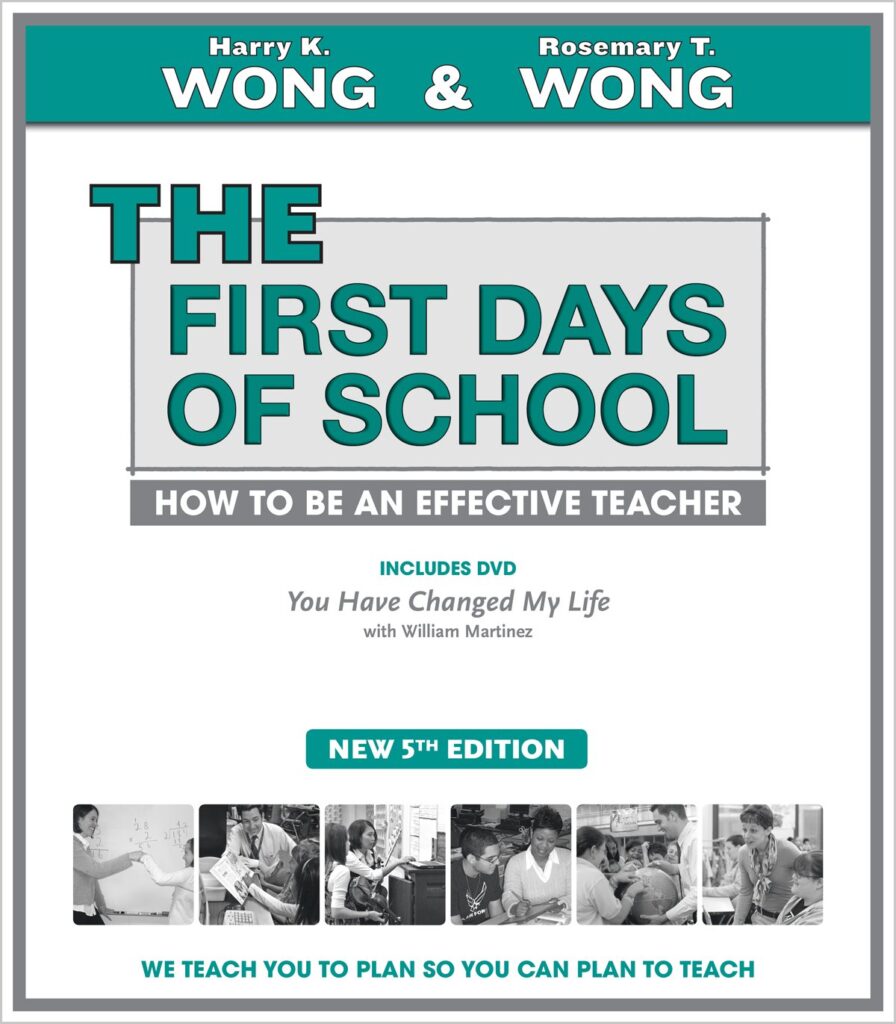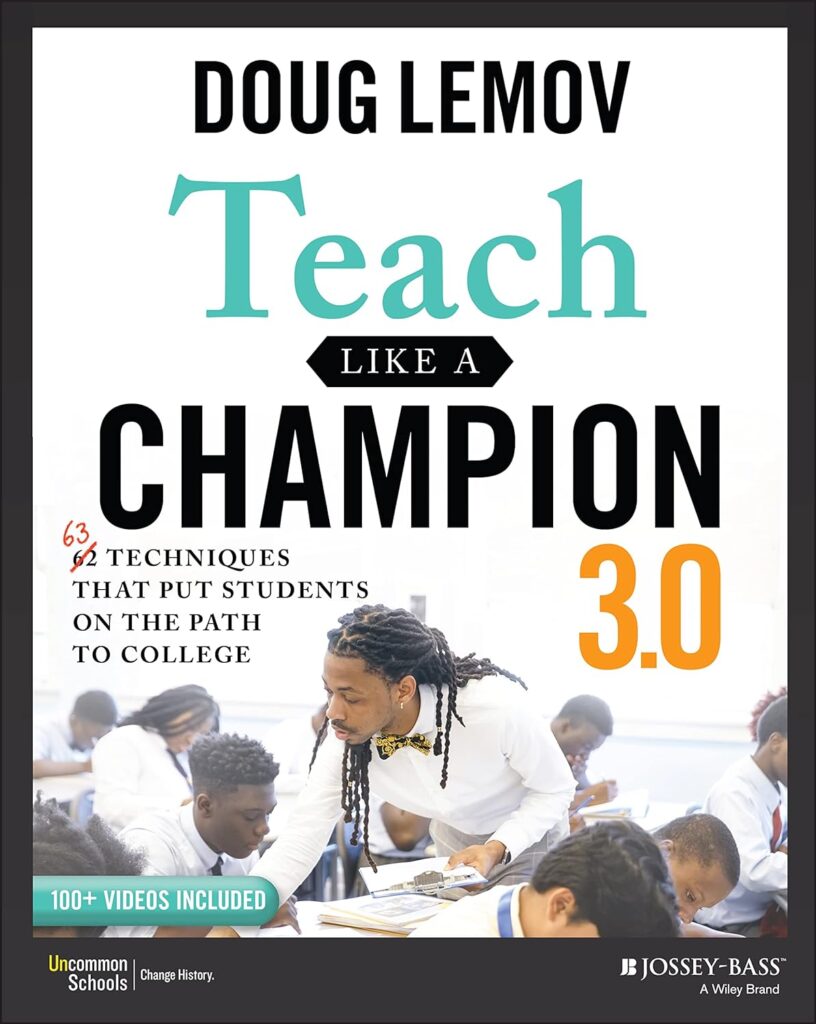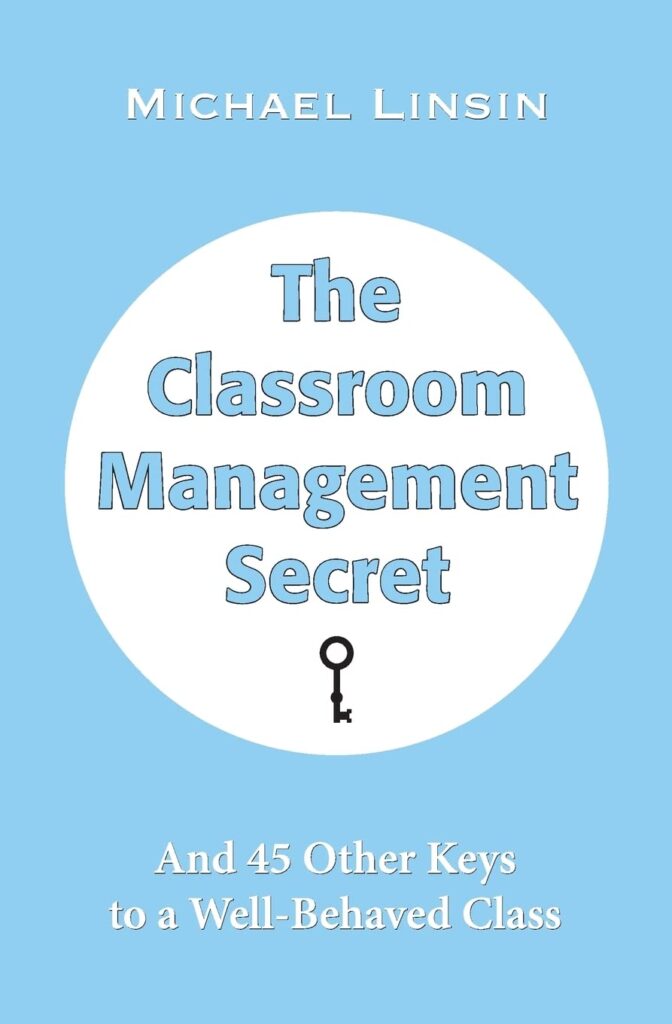Contents
Toggle
Meet David De’ Ath, founder, editor, and writer at Wonderful World English. With his extensive background as an English teacher, David provides valuable insights and practical tips on ESL for students and teachers alike.
Classroom management is a cornerstone of effective teaching. Teachers across all levels of education must learn to create structured yet flexible environments where learning can flourish.
This involves implementing strategies ranging from establishing clear expectations to responding to behavioral challenges to support students’ growth.
The right mix of classroom management techniques can turn chaotic classrooms into havens of productivity, and educators often turn to literature to find the most effective methods for their unique student populations.
A variety of books on classroom management have been written by experienced educators and researchers, providing a treasure trove of strategies and insights.
These books offer theories, research-backed approaches, and practical tips that teachers can adapt to fit their classroom cultures.
They help educators understand the psychology behind student behaviors, give techniques for maintaining a positive classroom atmosphere, and advise on how to foster an environment conducive to learning.
With countless titles available, selecting the right books becomes a critical step for teachers aspiring to refine their classroom management skills and enhance the quality of their students’ educational experience.
From guides detailing proactive classroom procedures to narratives that inspire and reframe educators’ perspectives, these books play a pivotal role in shaping teaching methods.
Teachers looking for resources will find expert opinions and real-world solutions in volumes such as “THE Classroom Management Book” by Harry Wong, which offers actionable advice on setting up efficient classroom routines.
Understanding that a one-size-fits-all approach does not exist in education, these books serve as starting points from which educators can build customized, effective classroom management plans.
Foundations of Classroom Management
Classroom management is a multifaceted process that involves creating a positive learning environment, implementing effective discipline strategies, and enhancing student engagement to promote success.
This section breaks down the core areas essential for understanding and applying these principles.
Understanding Classroom Management
Classroom management refers to the techniques and skills that educators use to maintain order, enhance student behavior, and create a conducive learning environment.
Effective classroom management is critical as it directly impacts student success and the overall classroom experience.
Educators employ various strategies to manage behavior and maintain discipline, adjusting their approach to suit the developmental age of their students.
Characteristics of an Effective Teacher
An effective teacher possesses a set of characteristics that contribute to strong classroom management.
They exhibit clear communication, consistent application of rules, and the ability to motivate and inspire their students.
Consistency in their approach to discipline is key, as is the flexibility to adapt to the dynamics of their learning environment.
They employ a blend of authoritative and nurturing tactics to foster respect and a positive classroom culture.
The Role of Student Engagement
Student engagement is a critical component of classroom management that influences the frequency and intensity of students’ behaviors.
Engaged students are less likely to exhibit disruptive behavior and more likely to achieve academic success.
Educators can enhance engagement by creating interactive and relevant learning experiences and giving students a sense of ownership in their education.
The more involved students are in their learning, the more invested they are in the classroom’s social and academic dynamics.

Classroom Management Strategies and Techniques
Effective classroom management is multifaceted, encompassing proactive discipline, positive relationships, and practical day-to-day techniques.
Successful educators employ a variety of strategies to promote motivation, communication, and accountability, establishing a setting where academic success and mutual respect thrive.
Proactive Discipline and Preventative Strategies
Proactive discipline involves setting clear expectations for classroom behavior before challenges arise.
Preventative strategies include teaching and reinforcing rules collaboratively, which can lead to a more respectful classroom.
Conscious discipline and positive discipline are evidence-based approaches that emphasize self-regulation and interpersonal skills.
Using real-life examples to demonstrate accountability, these strategies are foundational in running the room effectively and curbing disruptive behavior.
Building Positive Teacher-Student Relationships
Developing strong teacher-student relationships is imperative for a supportive classroom climate.
Communicating with students in a manner that fosters self-awareness and mutual respect encourages them to invest in their own learning.
Techniques for building these relationships might include regular one-on-one interactions and personalized feedback, which fortify positive relationships and contribute to academic success.
Developing a Positive Learning Environment
Creating a positive learning environment goes beyond discipline.
It involves cultivating a space where students feel safe and motivated to engage.
Key elements include an organized physical setting, clear instructional goals, and an atmosphere that promotes positive interpersonal interactions.
Restorative practices can be integral to this process, offering a way to address issues and maintain a high level of respect.
Related: How to Build a Positive Classroom Culture – Teacher’s Tips
Tools and Techniques for Day-to-Day Management
Day-to-day management is underpinned by practical strategies that ensure a smoothly functioning classroom.
These might include:
- Classroom layout: Purposeful arrangement of desks and resources for optimal engagement and accessibility.
- Routine establishment: Clear, consistent procedures for common classroom activities to minimize confusion.
- Communication tools: Regular updates and announcements using a classroom app or board to keep students informed.
These techniques contribute to a streamlined classroom where students know what to expect and how to succeed.

Essential Books for Classroom Management
Selecting the right literature can dramatically impact educators’ approach to creating a positive classroom environment.
These books serve as pivotal resources for new and experienced teachers alike, offering practical strategies, theoretical backgrounds, and engagement techniques that can transform classroom dynamics.
Classics and Must-Reads for Educators
Harry K. Wong and Rosemary T. Wong‘s book, “The First Days of School,” is considered foundational for establishing a strong classroom foundation.
It underscores the importance of the first few weeks and provides a roadmap for teachers to start the academic year on the right foot.
Similarly, Fred Jones’s “Tools for Teaching” offers techniques for classroom discipline and order, focusing on non-confrontational methods that promote learning.

Innovative Approaches to Discipline and Learning
Employing fresh methodologies, Doug Lemov‘s “Teach Like a Champion” equips educators with actionable techniques to elicit high academic performance.
For those seeking to integrate respect and cooperation into their classrooms, Dominique Smith, Douglas Fisher, and Nancy Frey’s “Better Than Carrots or Sticks” focus on restorative practices rather than traditional disciplinary measures, fostering a more inclusive learning environment.

Books for Addressing Specific Challenges
Understanding the diverse needs of students is crucial.
Hence, Michael Linsin‘s “The Classroom Management Secret” and “Teaching with Love and Logic” by Jim Fay and David Funk present strategies for managing diverse classrooms, including those with children on the autism spectrum or from varying socioeconomic backgrounds.
Educational Researcher publications also provide insights into the latest scholarly thoughts on handling specific student characteristics and classroom challenges.

Classroom Management in Diverse Contexts
Effective classroom management strategies are essential to foster an orderly environment, meaningful curriculum delivery, and high student engagement.
Excellence in teaching requires a mastery of managing classrooms with diverse racial and cultural backgrounds, being inclusive of students across the autism spectrum and in different geographical locations, such as urban and rural areas, and adapting techniques for virtual contexts.
Culturally Responsive Teaching
Culturally responsive teaching is vital for promoting social justice. It acknowledges and respects each student’s race, ethnicity, and cultural background.
Educators demonstrate passion for the subject matter while adapting their methods to be sensitive to the cultural values and learning styles of their students, which can lead to improved student engagement and academic success.
For extensive insights into this approach and its impact, one can refer to Culturally Responsive Classroom Management.
Managing Inclusive Classrooms
Inclusivity in classrooms, especially those that accommodate students on the autism spectrum or with other special needs, demands specific management approaches.
Strategies such as differentiated instruction and the use of Individualized Education Programs (IEPs) ensure that all students have equal access to the curriculum.
For a deeper understanding, resources such as Classroom Behavior Management for Diverse and Inclusive Schools provide extensive strategies.
Adapting to Virtual Learning Environments
Virtual learning environments require educators to reimagine classroom management.
Maintaining an orderly online classroom setting necessitates clear guidelines and an emphasis on digital etiquette.
Student engagement can be particularly challenging in virtual contexts. Therefore, teachers need to employ diverse approaches and tools to keep students interested and excelling in their education.

Conclusion
Effective classroom management is crucial for creating productive learning environments.
It encompasses strategies that range from setting clear expectations to supporting student growth.
Educators often turn to books on classroom management for effective methods and practical tips tailored to their unique student populations.
These books provide both theoretical insights and actionable advice.
Notable works like Harry K. Wong’s “The First Days of School” and Doug Lemov’s “Teach Like a Champion” offer tools for creating engaging and orderly classrooms.
They help educators handle daily challenges and foster environments where students can thrive.
By exploring these texts, teachers can craft strategies that respect diverse student needs while maintaining discipline and academic rigor.
Ultimately, these resources support educators in nurturing educational settings where learning is valued, and every student has the opportunity to succeed.
We hope you find value in this information; you can contact us if you require any support.
Have a wonderful day!
Image Attribution: All images licensed via canva.com





